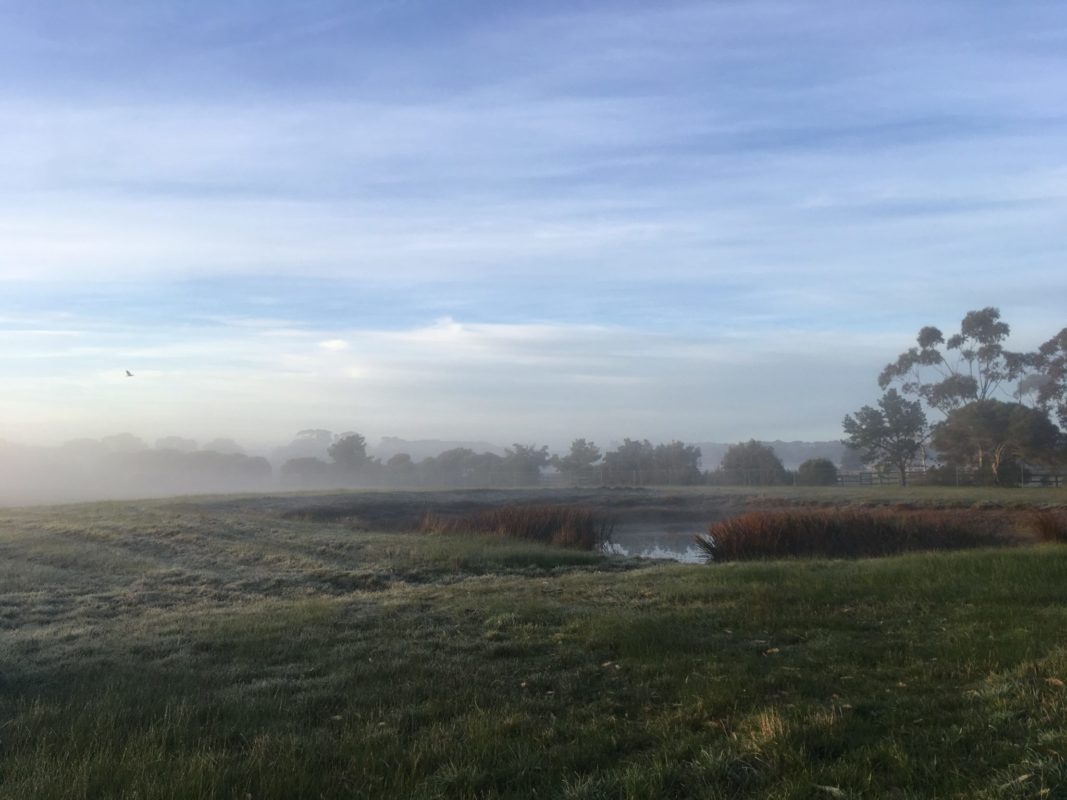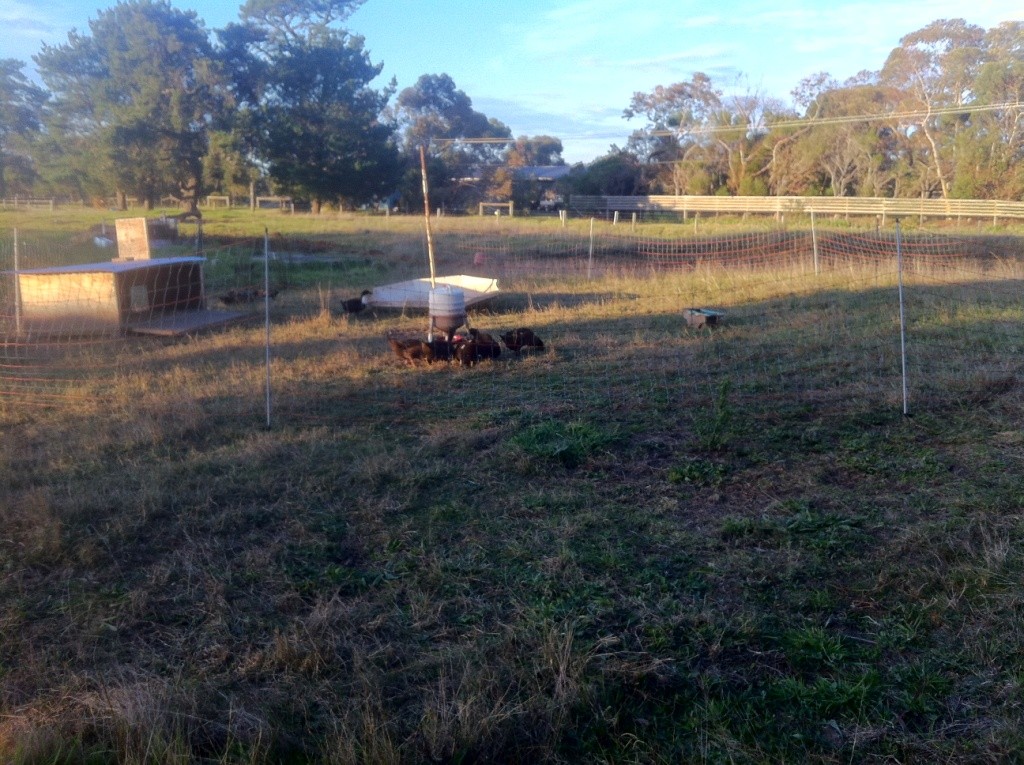Heritage Farm has free range duck. There’s been a lot of commotion over the definition of free range egg farming – raised again by an article from Choice. Free range guidelines currently allow up to 10,000 birds per hectare (1 bird per square metre) – at Heritage Farm we have 1 bird for every 15 square metres.
Our hope is to have the vast majority of the bird feed available within each paddock, which is only possible if they have plenty of room.
Having ten birds in 150 square metres means that the ducks are far less stressed, happier and get to eat more grass, and insects. The more ducks stuck together, the more the birds stress out and the lower their laying rates as well (so it’s good for everyone if they have a bit of space for themselves). Stocking rates are really important for the sustainability of the business.
Obviously I care very deeply about the living conditions of the animals that I tend to – and I also think it’s important that consumers and others farmers care about the health and lives of the animals that provide their food.
I am only willing to run a free range farm with minimal animal stocking rates. A happy, healthy animal makes for much more nutritious and tasty food. This practice should also mean less expenses on antibiotics and food for the ducks.
I wouldn’t be surprised to see regulations enforced for food labelled free range in the not-too-distant future.
The most likely outcome for free range egg restrictions, is for the maximum number of birds per hectare (10,000 square metres) to be capped at 1,500 birds. This would be the fairest outcome for large and small producers when taking into account the perception of free range and minimal animal stocking rates. When consumers think of free range animals, they imagine 1500 birds per hectare.
Hopefully everyone can get more clarity on this issue in the near future!


